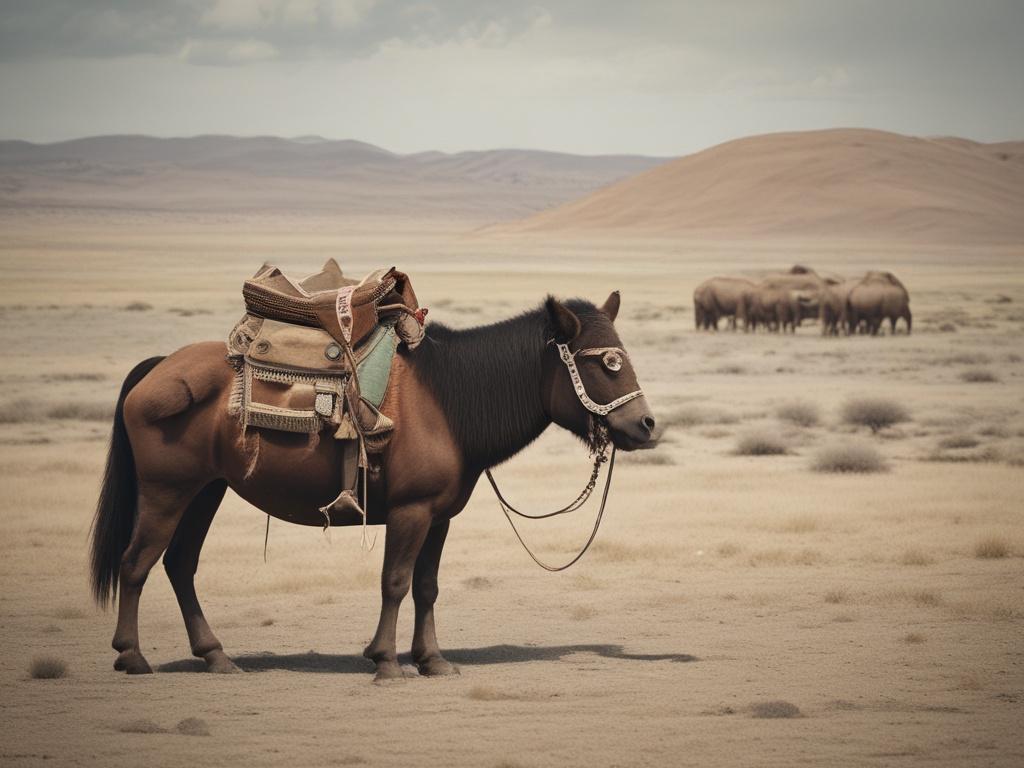

Southern Mongolia boasts a captivating history that weaves together the threads of ancient cultures, powerful empires, and modern challenges. As you explore this unique region, you'll uncover a tapestry of traditions dating back thousands of years, shaped by the nomadic lifestyle that characterizes its people. From the legendary Genghis Khan to the vibrant customs of the Mongolian tribes, Southern Mongolia offers a vivid glimpse into a past that continues to influence its present. This blog post invites you on a journey through time, leading you to discover the rich heritage and historical significance that define this remarkable area.
As we delve deeper into the heart of Southern Mongolia, we will highlight key historical landmarks that have shaped its identity over the centuries, illustrating the resilience and adaptability of its people. However, this rich legacy faces modern-day challenges that threaten its preservation. By exploring the delicate balance between honoring the past and navigating contemporary issues, we aim to shed light on the ongoing efforts to maintain Southern Mongolia's unique cultural narrative. Join us as we embark on this exploration of Southern Mongolia’s captivating history and its ongoing journey towards the future.
Explore the ancient cultures of Southern Mongolia: A journey through time
Southern Mongolia boasts a tapestry of ancient cultures that dates back thousands of years. The region has long been a crossroads for nomadic tribes, empires, and traders, each leaving an indelible mark on its cultural landscape. The Xiongnu Empire, which thrived during the first millennium BCE, represents one of the earliest and most powerful nomadic confederations in the area. Their advanced social structures and military prowess laid the groundwork for the Mongolian nomadic lifestyle we recognize today. Furthermore, archaeological discoveries, such as burial mounds and petroglyphs, offer insights into the spiritual and daily lives of these ancient peoples, revealing their deep connection to the land and horses they revered.
In addition to the Xiongnu, other prominent cultures, such as the Turkic tribes and the Mongol Empire, have left their legacy on Southern Mongolia. The Mongol Empire, under the leadership of Genghis Khan in the 13th century, unified the region and expanded its influence across Eurasia. This monumental event transformed not only Southern Mongolia but also the world, as it established trade routes like the Silk Road, facilitating cultural exchanges. Today, the echoes of these rich histories resonate throughout Southern Mongolia, from traditional festivals and customs to the oral histories passed down through generations. As visitors explore the captivating history of Southern Mongolia, they are invited to appreciate the resilience and adaptability of its peoples, who continue to cherish their vibrant heritage while navigating the complexities of modern life.
Discover the historical landmarks that shaped Southern Mongolia's identity
Southern Mongolia boasts a wealth of historical landmarks that tell the story of its rich past and cultural heritage. The ancient city of Kharkhorin, once the capital of the Mongol Empire, stands as a testament to the region's historical significance. Visitors can explore the ruins of the ancient city and the nearby Erdene Zuu Monastery, the first Buddhist monastery in Mongolia, founded in the 16th century. These architectural marvels, with their intricate designs and rich histories, serve as key symbols of Southern Mongolia's spiritual and cultural evolution. By standing among these stones, one can almost feel the footsteps of the great Genghis Khan and his successors reverberating through the air.
The Gobi Desert, with its stunning landscapes and archaeological sites, also plays a crucial role in understanding Southern Mongolia's identity. The ancient Silk Road once traversed these vast sands and was vital for trade and cultural exchange between East and West. Today, the ruins of ancient caravanserais and watchtowers remind us of the countless travelers who journeyed through this rugged terrain. Additionally, the petroglyphs at Tamar Shankh and the various burial mounds scattered throughout the region provide invaluable insight into the life of prehistoric nomadic tribes. Each landmark, whether religious, administrative, or trade-related, paints a vivid picture of Southern Mongolia's past, inviting exploration and contemplation by those who seek to understand this fascinating region.
Uncover modern-day challenges: Preserving the legacy of Southern Mongolia's rich history
Southern Mongolia faces numerous challenges in preserving its rich cultural heritage amid rapid modernization and globalization. The influx of urban development often encroaches on sacred sites and historical landmarks, threatening to erase centuries of cultural significance. Local communities, deeply connected to their traditions, struggle to maintain their practices and languages in the face of increasing pressures from outside influences. This situation calls for sustainable preservation efforts that include engaging local populations in safeguarding their history while making it relevant for future generations.
Additionally, the balancing act of economic growth and cultural preservation has led to tensions within the region. As industries expand and new technologies emerge, traditional lifestyles sometimes clash with modern aspirations. Efforts to support traditional crafts, such as textile weaving and pottery, have gained momentum, yet funding and resources often fall short. Activists, scholars, and local leaders are advocating for policies that honor Southern Mongolia's past while strategically navigating the challenges of the present. By prioritizing cultural education and awareness, the hope is to foster a society that not only appreciates but actively participates in preserving the captivating history of Southern Mongolia for years to come.